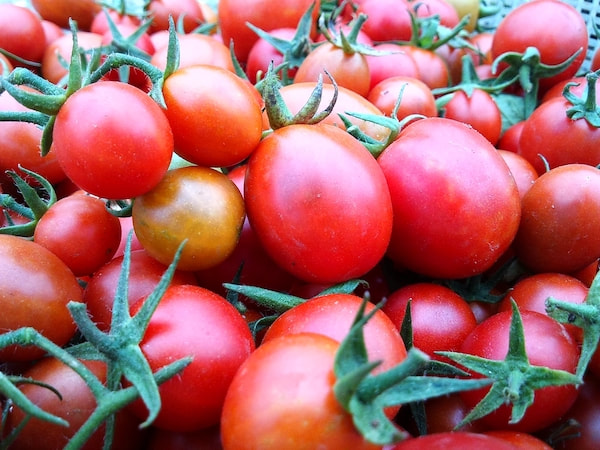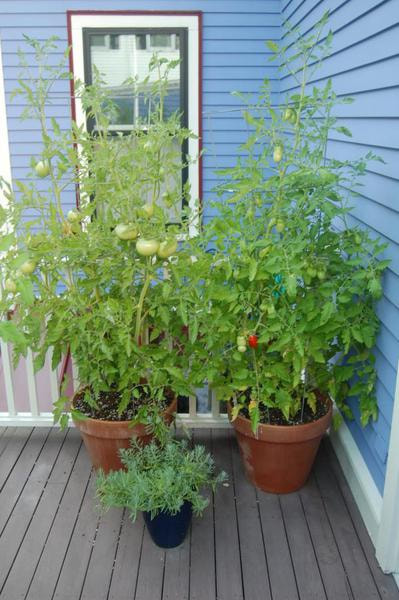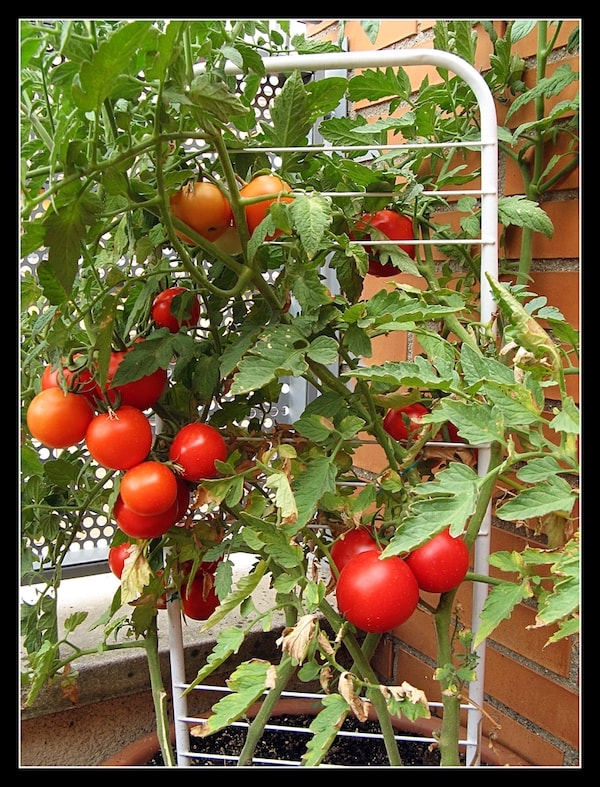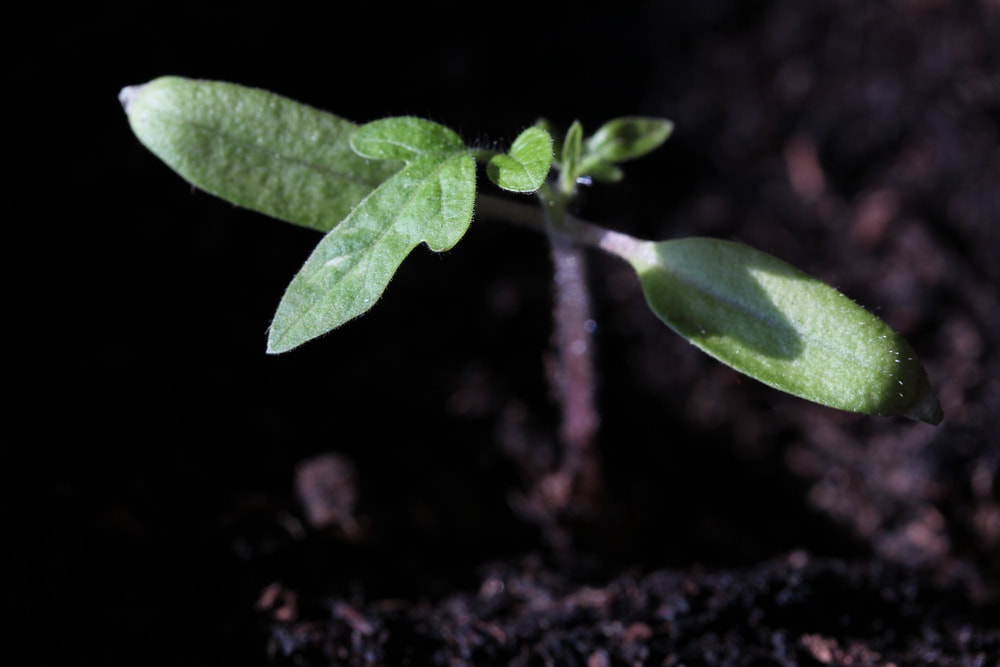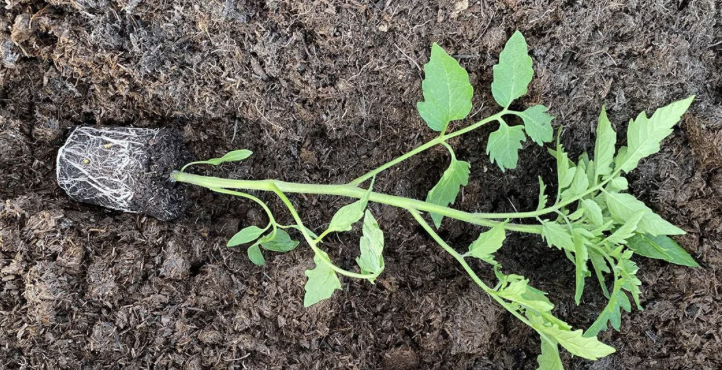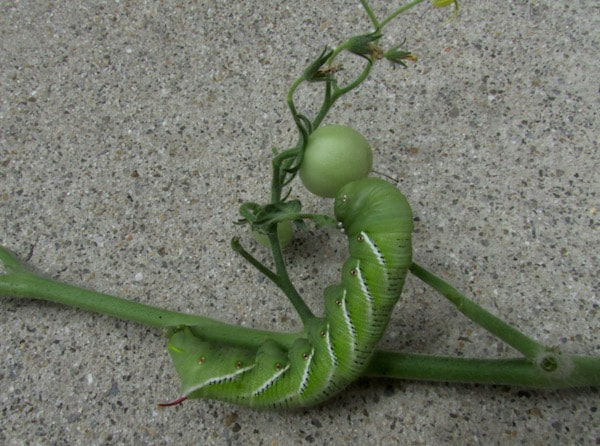|
By Joanne K. and John W., NC State Extension Master GardenerSM volunteers When sunny 70+ degree days start popping up in March in eastern NC, gardeners become eager to start digging in the dirt to plant their veggies.
Types of Plants When deciding which varieties to plant, there are two types to consider: 1) Determinate tomatoes grow to a certain height and are good for container planting. The fruit ripens in 3 to 4 weeks and then the plant is done. Most of the disease-resistant varieties are determinate. 2) Indeterminate ones grow from 5 to 20 feet tall, fruiting all season if the climate is favorable. They need a support system such as cages, poles, or trellises to prevent drooping or breaking.
Caring for Your Plants
Depending on the variety, tomatoes need anywhere from no support to 15-foot poles. Water when the soil starts to dry out. Drip irrigation is better than overhead to reduce disease problems. Tomatoes need 1" to 1 1/2" of rain or water each week. Do a soil test to determine your fertilizer needs. Use a plant-starting fertilizer solution when putting the tomatoes in the ground. Tomatoes are heavy feeders and will need two to three tablespoons per plant of 8-8-8 or 10-10-10 when the fruit starts to set and every 4-6 weeks afterward. Suckers are the new growth that forms at the axial joint. Removing the suckers encourages fewer but bigger tomatoes. It also allows more air flow between plants and discourages insect and disease populations. Remove suckers by pinching close to the stem with your fingers or cutting with pruners. The suckers can be planted to create new plants. Problems If deer visit your garden, you will need a fence. Birds will usually take one or two pecks in ripe fruit. You can eat around the wound. Squirrels can take large bites out of ripe tomatoes. Rabbits may nibble on small plants, but they generally don't bother larger ones. Turtles like to eat the ripe fruit that they can reach. Using foil when planting deters cutworms. Check for tomato horn worms whose green coloration makes them hard to spot. They can be picked off by hand and squashed. Diseases Unfortunately, tomatoes are susceptible to many types of disease with very few cures. Control methods include: 1. Plant disease-resistant varieties. 2. Cut off the bottom leaves if the problem starts there (Septoria leaf spot). 3. Pull out the problem plant and dispose of it in the garbage. 4. Plant extra plants. 5. Rotate crops so that the same plant is not grown in the same area for 3 to 4 years. Tomatoes, potatoes, peppers, and eggplants are all in the Solanaceae or nightshade family, and should not follow one another in the garden. Other Problems If the plant has all leaves, but few flowers, too much nitrogen fertilizer was used. If there are lots of flowers but few tomatoes, the air temperature is too high. Tomatoes with black ends have blossom-end rot, indicating a lack of calcium in the soil and/or irregular soil moisture. Cracking occurs when the fruit is almost ripe and there is a heavy rain. Try picking tomatoes just as they start to color. Ripen them indoors. For more information on growing tomatoes go to the NC Extension Gardener Plant Toolbox at: https://plants.ces.ncsu.edu/plants/solanum-lycopersicum/ Also check these other NC State Extension links: https://content.ces.ncsu.edu/eastern-north-carolina-planting-calendar-for-annual-vegetables-fruits-and-herbs https://content.ces.ncsu.edu/insect-and-related-pests-of-vegetables/pests-of-tomato https://vegetables.ces.ncsu.edu/tomatoes-diseases/
1 Comment
Rosanne Davis
3/28/2024 01:53:30 pm
Great article!!!
Reply
Leave a Reply. |
